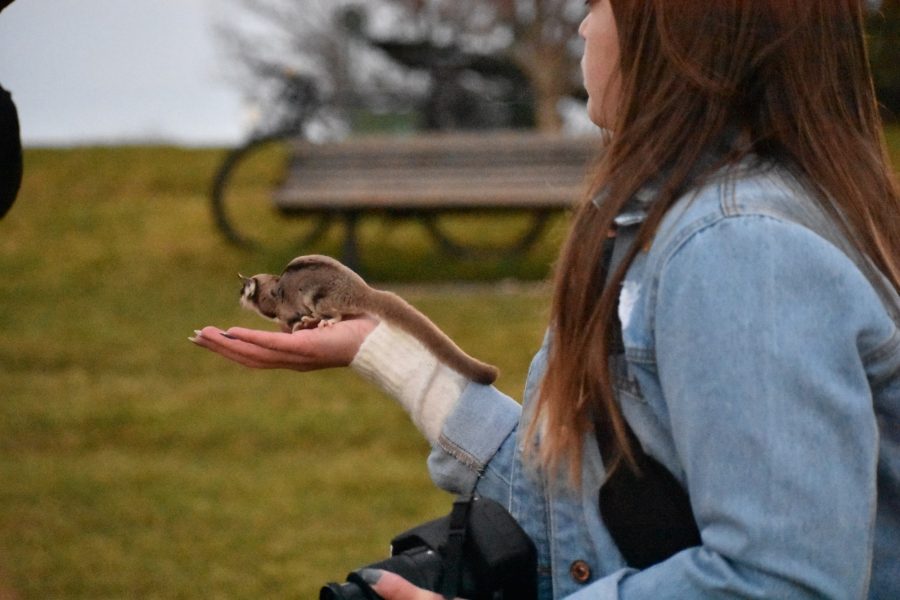Editors Note: This article has been updated as of Feb. 22, 2018 to correct misinformation and provide clarification on service and emotional support animals.
Today, it is time to honor special guests Zaboomafu, or Zaboo for short, and his owner, Arianna Preuss, who is a junior clinical/counseling psychology major at Colorado State University.
Have you ever seen a fluffy ball crawl up someone’s sleeve before? That probably was a sugar glider. It is not like they would be a heavy load, their three to five ounces would feel like a raindrop. These small but mighty animals are originally from Australia, are part of the possum family and are known for the membrane between their legs that let them glide from tree to tree. They can cover up to 150 feet of distance while gliding, that is a 50-yard touchdown right there.
But for Preuss, gliding is not what makes Zaboo so special. Preuss was diagnosed with a brain malformation shortly after convincing her parents to get him; he was a little over six months old. “I found during my healing process [after brain surgery] that Zaboo was really great at comforting me and was able to read when I was upset and act accordingly to make me feel better,” Preuss said.
She has been working and training with animals since she was five years old, so Preuss was pleasantly surprised to see the potential in Zaboo. At first, she did not quite see the extent to which he was going to help others at that time of post-surgery. Now, he is four years old and legally an emotional support animal but Preuss intends to work on service animal species restrictions.
However, there is a difference between a service animal and an emotional support animal. A service animal is considered “a dog that is individually trained to do work or perform tasks for the benefit of an individual with a disability” according to ADA National Network. They define an emotional support animal as an animal that provides “companionship, relieve loneliness, and sometimes help with depression, anxiety, and certain phobias.”
Preuss has been working on “designing therapy sessions involving exotic animals instead of just dogs,” after taking a class on animal-assisted therapy, her freshman year at CSU. Zaboo will live 12-15 years, so clients will be able to develop imperative relationships with their sugar gliders. She had realized that it was time for Zaboo to get as much human interaction as possible and that is exactly what she did and still does. You can find the fluff ball up her sleeve or on her shoulder with her friends, family, classmates and in her living space.
It was an amazing breakthrough when Zaboo started giving calming effects to a friend of Preuss’ with post-traumatic stress disorder. Then, before Preuss knew it, the little hero was helping her youngest brother overcome challenges that may accompany autism. Her brother was able to practice “being comfortable with new sensory input and [work] on self-control and emotional regulation,” Preuss said. Maybe other counselors will start to catch on to this miraculous idea.
Preuss likes Zaboo because “he is inconspicuous, unlike a dog or miniature horse, to lessen stress level and still be able to work.” Her goal after getting her doctorate in clinical/counseling psychology is to utilize him in therapy sessions in order to make sessions more inviting and relaxed. He could maybe calm panic attacks, build confidence, or work on “identifying emotions.”
Zaboo is a great companion and right now, they are working on nodding “yes” just for the fun of it. Preuss even taught him how to wink on command, what a flirt. Make sure to give Zaboo a friendly wink if you see him on campus.




































